Interior Lighting Effects
Lighting is a powerful tool in interior design that can completely transform the look and feel of a space. Beyond basic illumination, different lighting effects can create unique atmospheres, highlight architectural details, and add a layer of sophistication to interiors. The three basic types of lighting are ambient lighting, task lighting and ambient lighting that we had discussed in our last blog. Using these 3 types of interior lighting we can create various lighting effects like cove lighting, wall grazing, backlighting, uplighting etc allow for creative play with light and shadow, adding texture and depth to a room.
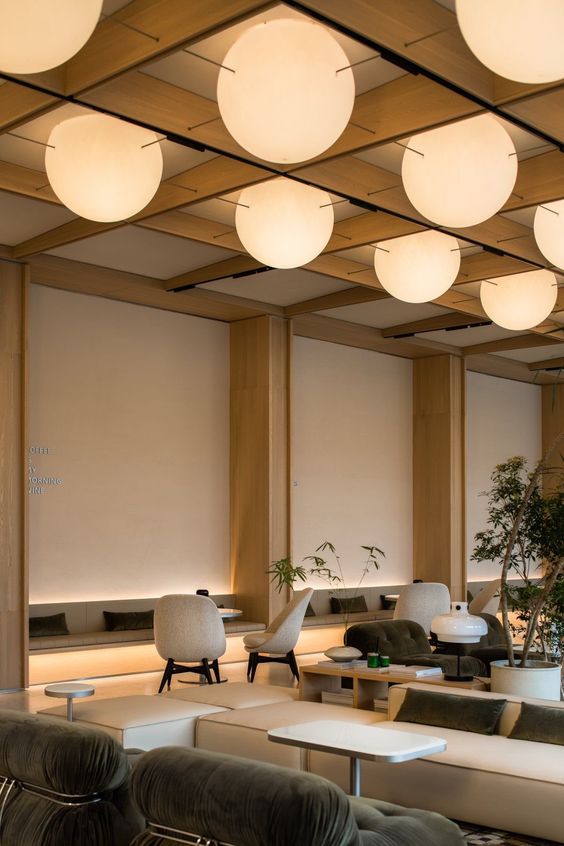
These effects can make spaces feel more dynamic, cozy, or spacious, depending on how they are used. By experimenting with various lighting techniques, interiors can be tailored to suit any mood or design vision. So, let’s begin to discuss these techniques
1. Direct Lighting
Direct lighting refers to a lighting technique where the light source directs the majority of its light downward or toward a specific area, providing focused and concentrated illumination. Unlike indirect lighting, which disperses light over a broader area by reflecting it off walls or ceilings, direct lighting is powerful, precise, and functional. It is commonly used in areas where visibility is key, such as workspaces, reading areas, and dining rooms, but it can also be creatively used to enhance the overall design of an interior space.
In living rooms or dining spaces, a combination of direct lighting for dining tables, seating areas, or shelves can create a layered effect. The juxtaposition between lit and unlit areas can guide the eye and add visual interest.
Strategically placed downlights along corridors, under stairs, or near ceiling mouldings can make architectural features stand out and give the desired look and feel. Look below how the use of spotlights highlight the desired paintings and the whole style of the space looks toward vintage due to the elements used such as light style, brick wall etc

Direct lighting used in outdoors, such as spotlights or pathway lights, offers both functional and aesthetic benefits by illuminating specific outdoor features like walkways, staircases, or garden plants.

By using direct lighting creatively, you can enhance the functionality of a space, draw attention to key elements, and create varying moods that transform the overall feel of an interior.
2. Indirect Lighting
Indirect lighting refers to any lighting that is directed toward a surface (like walls or ceilings) rather than directly illuminating an area. It involves light sources that bounce off surfaces to create a soft, diffused illumination in a room. In the below photo you can see how indirect light is used to illuminate the stairs creating visual interest.
Indirect lighting produces a warm, gentle glow that makes a space feel calm and inviting, perfect for areas where relaxation is key. Using cove lighting, where LED strips or light fixtures are hidden in ceiling recesses or behind mouldings, creates an ambient glow. This is ideal for living rooms, bedrooms, or lounges, where you want to promote relaxation.

Indirect lighting offers illumination without the harsh glare that direct lighting can produce, creating a more comfortable environment. Concealing light sources behind mirrors, furniture, or cabinets allows light to softly illuminate the surroundings. This technique is popular in bathrooms or dressing areas, where it provides even, flattering light without the harshness of exposed bulbs.
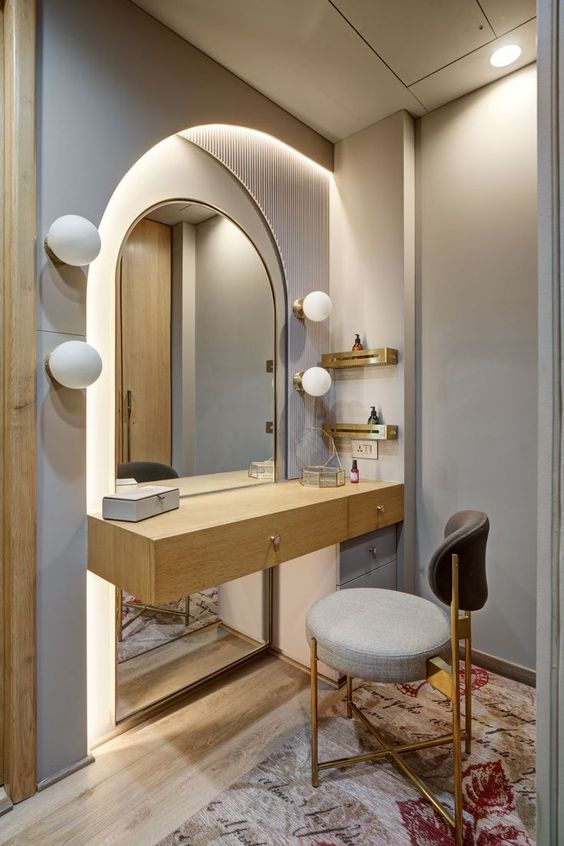
Indirect lighting is also ideal for using colored lights, which can change the ambiance of a space dramatically, from warm and cozy to cool and modern. LED strips with colour-changing capabilities can be installed behind furniture, under cabinets, or around ceiling coves to introduce different hues to the room. This technique is popular in entertainment areas, home theaters, or bedrooms, where you can adjust the lighting to match your mood or activity.

Indirect lighting can make objects or architectural features appear to be floating, adding a sense of lightness and intrigue. Install lighting under floating shelves, behind wall-mounted TVs, or beneath furniture pieces like beds or cabinets to create this illusion. The glow beneath these objects gives them a sense of weightlessness and adds an extra layer of sophistication to the design.

Indirect lighting is an excellent way to enhance the ambiance and functionality of an interior space. By providing soft, diffused light, it can create a cozy and inviting atmosphere, make rooms feel larger, and highlight architectural features. Whether used as the primary lighting source or to complement other lighting effects, indirect lighting offers endless possibilities to enrich the visual appeal and mood of an interior.
3. Diffuse Lighting
Diffuse lighting is a soft, evenly distributed light that spreads across a room without creating harsh shadows, bright spots, or glare. Unlike direct lighting, which shines in a concentrated beam, diffuse lighting scatters light in multiple directions, resulting in a gentle and comfortable ambiance that makes the space feel warm and inviting. This type of lighting is ideal for creating a cozy and relaxed atmosphere in any room. Also it is different from indirect lighting. The main difference with indirect and diffuse lighting is that, in diffuse lighting – light is passed through a material such as glass, acrylic or other elements to give a diffuse effect.

Light fixtures with opaque or semi-transparent lampshades help diffuse the light, softening the illumination that spreads around the room. Fabric or paper lampshades work well for creating a diffuse effect.
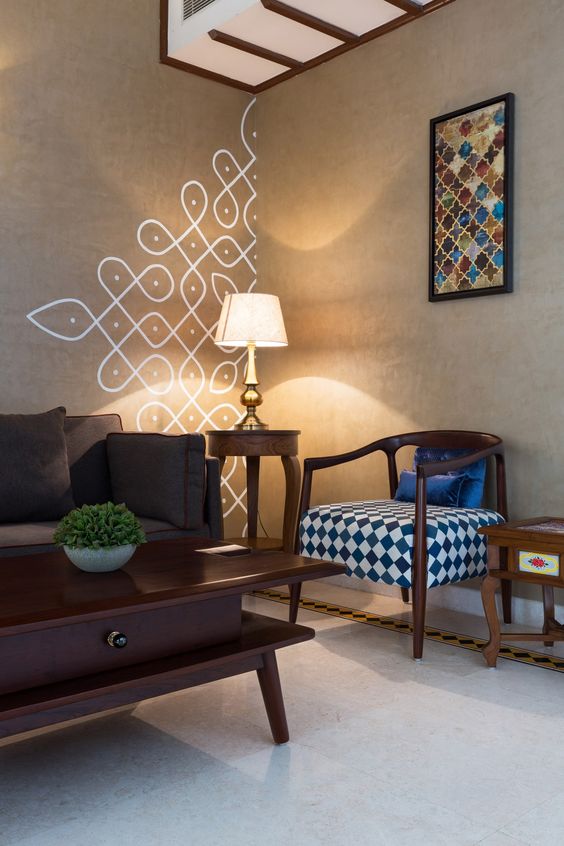
Diffuse light effect can be created by using translucent interior materials such as fluted glass, frosted glass, acrylic sheet etc. These translucent finishes diffuses light, allowing it to pass through while softening it. It reduces glare and creates an even spread of illumination. Below is the example of the same that we have used in our project. Look how the use of fluted glass in crockery unit creates a diffused light effect.

One more technique is Backlighting where light source is placed behind objects, furniture, or architectural elements like mirrors or shelves. Backlighting creates a glowing halo effect around the object, making it stand out and adding a sense of depth.
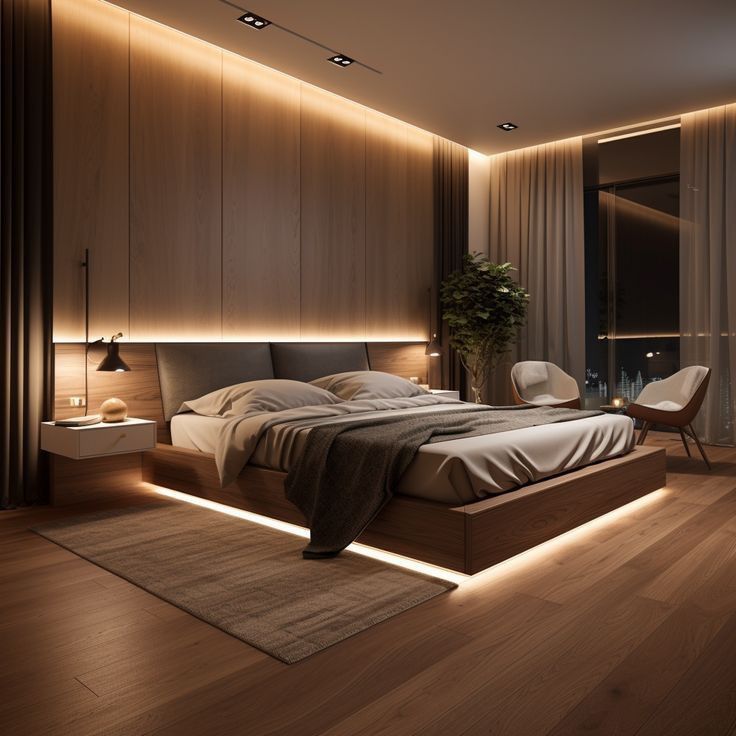
Certain stones like onyx or alabaster are semi-translucent and have natural patterns that beautifully diffuse light. When illuminated from behind, these stones create a warm, ambient glow with unique textures.

Even natural light can be diffused using sheer curtains or drapes on windows. This helps scatter the sunlight entering the room, reducing glare and creating a soft, even glow.
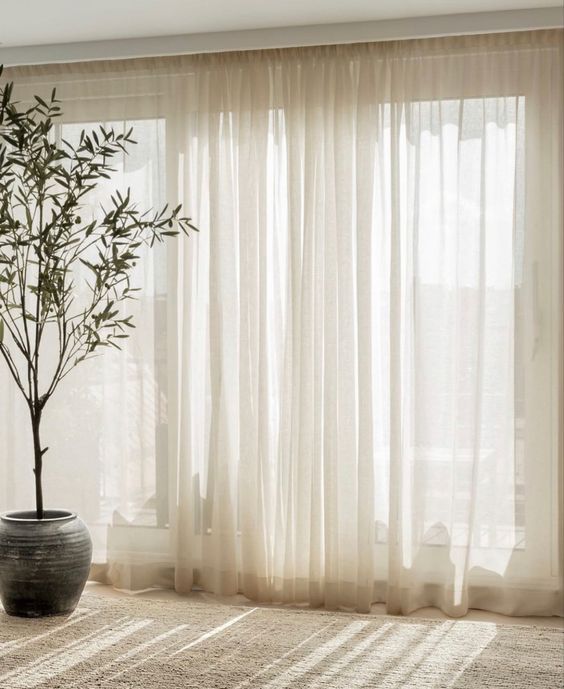
Hence by incorporating these materials into your interior design, you can effectively create diffuse lighting effects that enhance the ambiance and visual appeal of any space, making it feel warm, inviting, and evenly lit.
4. Effect Lighting
Effect lighting refers to specialized lighting techniques used to create unique visual impacts, enhance specific elements in a space, and contribute to the overall ambiance of a room. It is designed to highlight architectural details, emphasize textures, create dynamic lighting patterns, and introduce drama or intrigue into a space.

Lights placed inside cabinets or drawers provide a luxurious and functional lighting effect, making items easier to see while creating a warm, ambient glow when the cabinet doors are opened.

Toe-kick lighting is placed at the base of cabinetry or furniture, casting light downward and creating a floating or glowing effect. It also acts as a subtle night light in kitchens or bathrooms.

Light integrated into wooden panels, ceilings, or custom-built furniture, creates a seamless and modern look while offering ambient or task lighting. For this recessed LED fixtures are installed directly into the carpentry elements such as bookshelves, cabinets, or wooden ceiling beams.
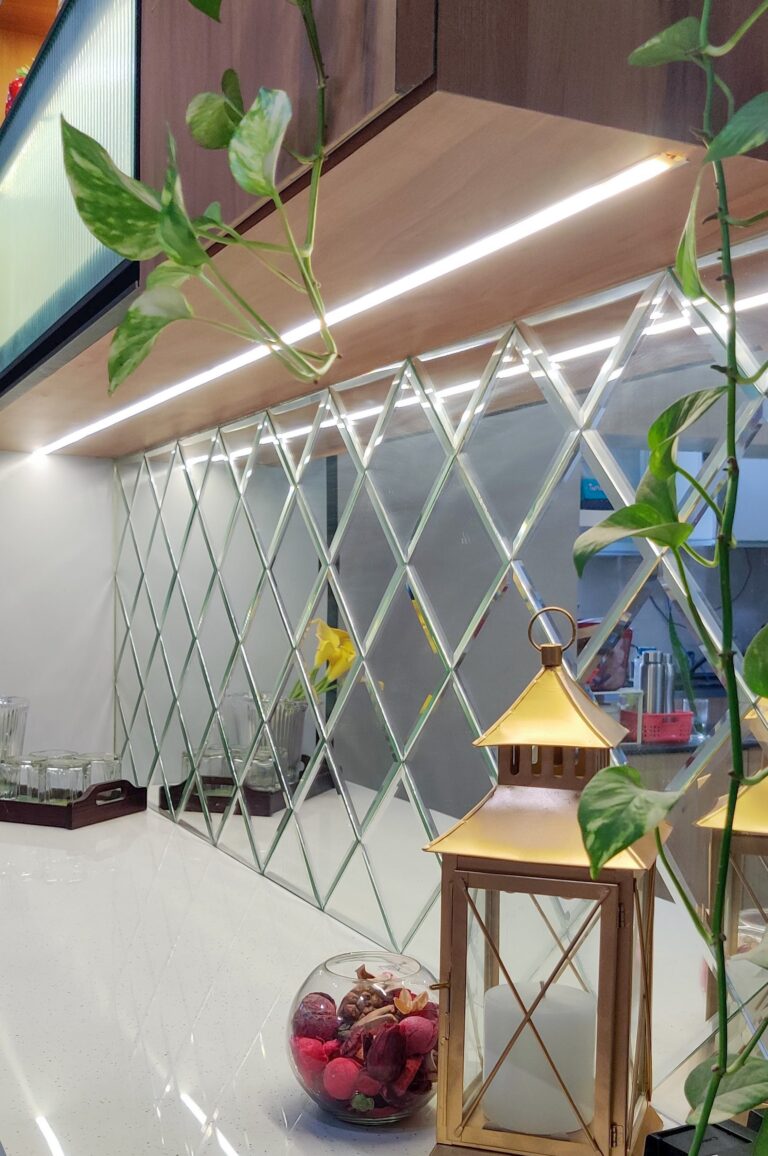
Linear light fixtures, such as LED strips or recessed lights, can be installed in straight or geometric arrangements to create pattern effects on walls, ceilings, or floors. By placing these lights in parallel, grid, or zigzag formations, designers can generate a modern, structured light pattern.

Another technique is Edge lighting that highlights the borders or edges of objects, such as shelves, mirrors, etc. In contrast to backlighting, edge lighting highlights the perimeter of objects, giving them a sleek, modern look.
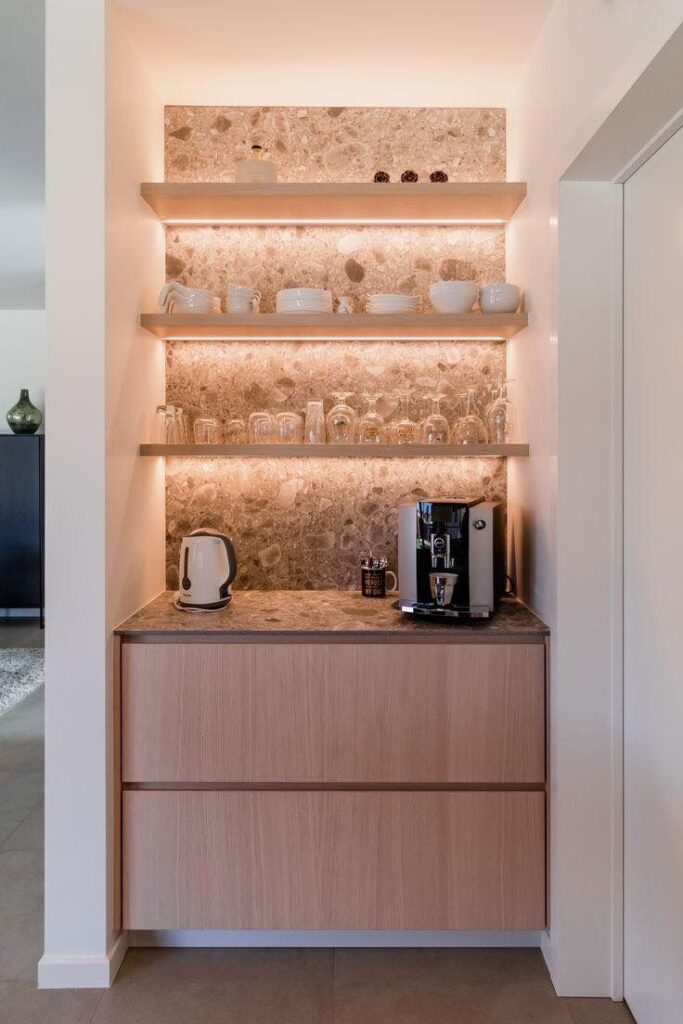
Effect lighting can help in highlighting walls. There are two ways in which that can be done one is wall washing and another is wall grazing. Wall washing evenly illuminates smooth walls. Wall washing creates a soft, even glow across walls, making spaces appear larger and more open.

Wall grazing highlights textures like brick or stone, while wall washing makes walls appear smoother and brighter.

By thoughtfully incorporating effect lighting, interior designers can shape how a space feels, guide attention to specific features, and create a variety of visual effects that enhance the overall experience of the room.
5. Create Patterns
Using light to create patterns in interior design is an effective way to introduce visual interest, texture, and a dynamic element to a space. Light patterns can transform a plain surface into a work of art, providing depth and movement. Even natural light can be used to create several artistic patterns.

Laser-cut metal or wooden panels, screens, or partitions with intricate patterns can be backlit to project the design onto walls or ceilings. When light is directed through these screens, it casts the pattern onto adjacent surfaces.

Positioning lights behind or beside objects such as plants, sculptures, or decorative grills can cast shadows on walls or floors, creating a patterned effect. These shadows form natural, abstract patterns that change depending on the position and intensity of the light source. The organic patterns can add depth and a sense of movement to the space.
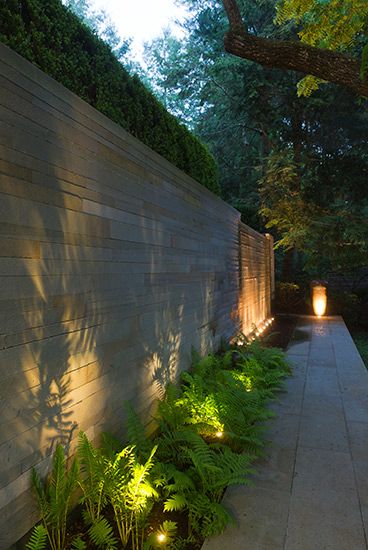
Lighting fixtures installed directly onto the ceiling, such as chandeliers or pendant lights with patterned shades, can cast intricate light patterns onto the ceiling itself. This can create decorative ceiling patterns that mimic the design of the light fixture. It adds an artistic touch to the ceiling, making it a focal point in the room.
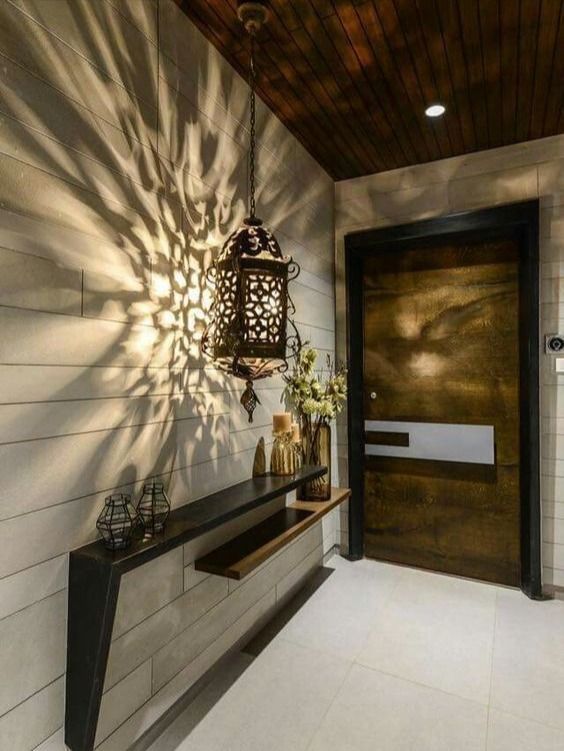
Colored glass can be an extraordinary design element in interiors, adding vibrant hues, soft glows, and intricate reflections to a space. Stained glass windows are made by combining pieces of colored glass into intricate patterns or images, typically framed. When natural or artificial light passes through these windows, it projects colorful light into the room or exterior area. It can be creatively use in a school or creche to make area playful for kids.

Incorporating lighting effects such as diffuse lighting, colored glass accents, or patterned light projections can elevate a space, transforming it from ordinary to extraordinary. By understanding and utilizing different lighting techniques, you can craft an atmosphere that not only complements the interior design but also enhances the everyday experience within your home or workspace.
I hope this blog has helped you understand the effect of lighting in your interiors and inspired you to transform your space with the perfect lighting combination!
Remember to here to keep getting updates
Until Then Take care and Keep learning!!
See you soon…
Megha Srivastava



